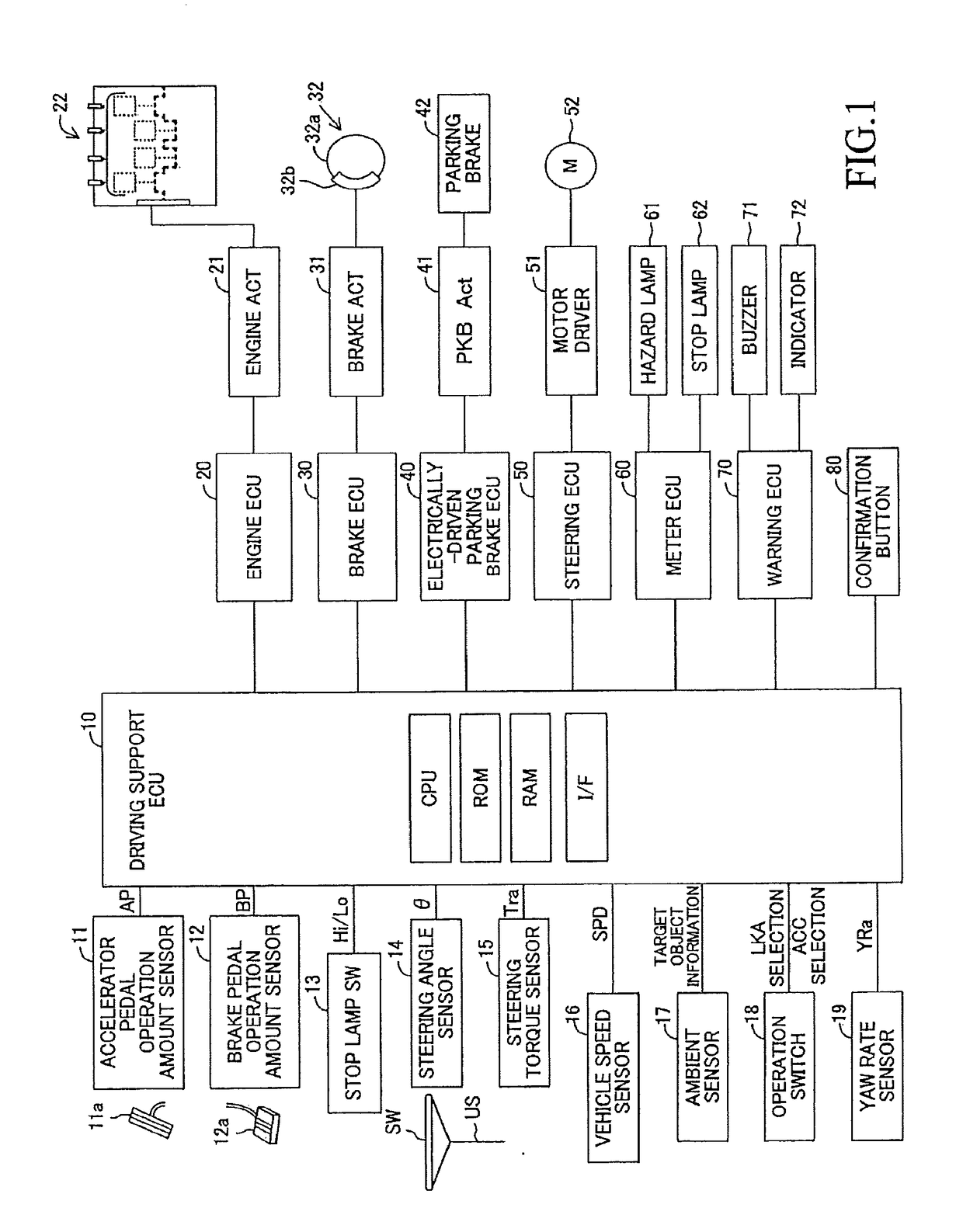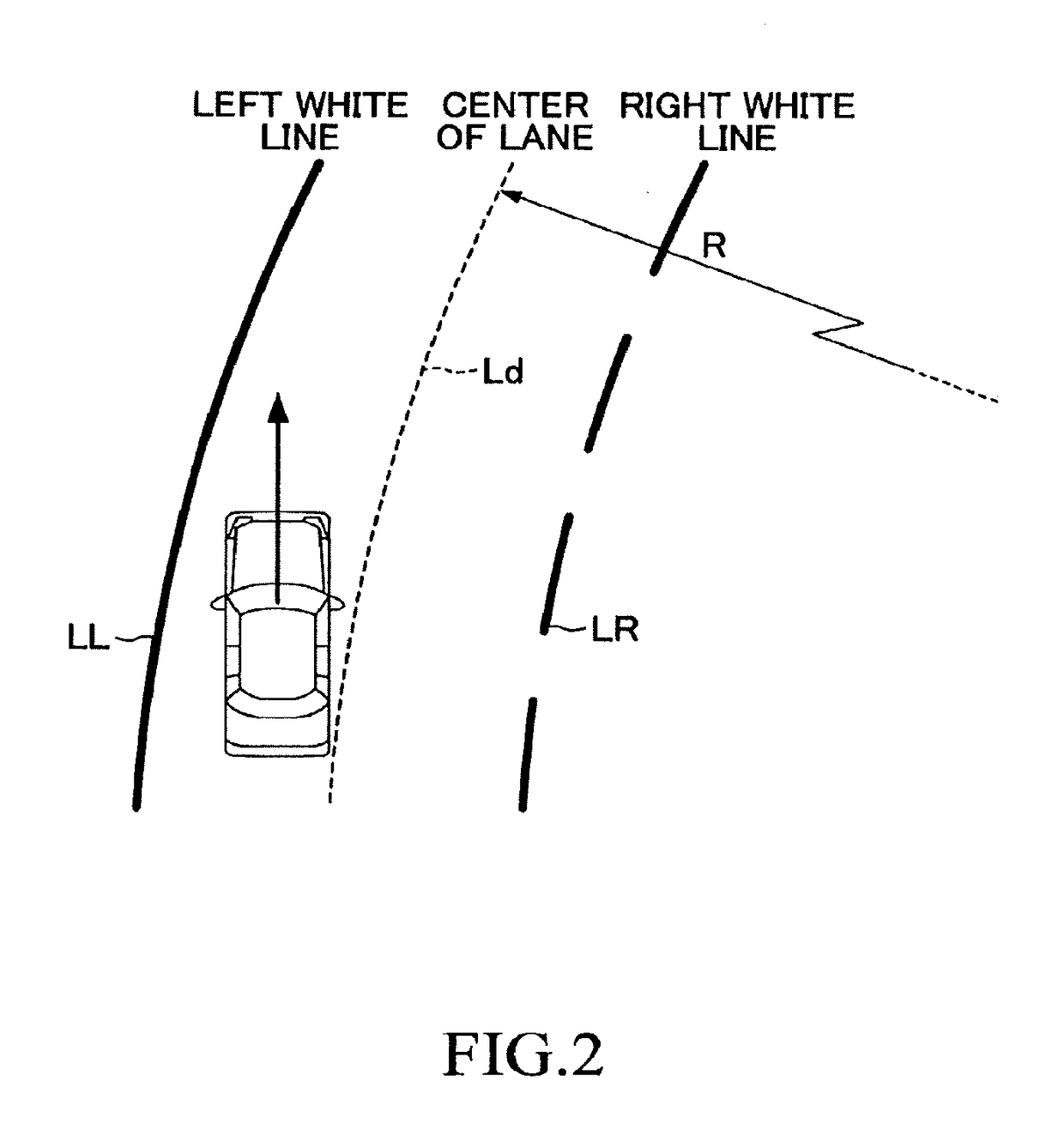Vehicle control apparatus
- Summary
- Abstract
- Description
- Claims
- Application Information
AI Technical Summary
Benefits of technology
Problems solved by technology
Method used
Image
Examples
first embodiment
[0067]A vehicle control apparatus according to the first embodiment of the present invention (hereinafter, may be referred to as a “first apparatus”) is, as shown in FIG. 1, applied to a vehicle (hereinafter, may be referred to as an “own vehicle” in order to distinguish it from other vehicles), and comprises a driving support ECU 10, an engine ECU 20, a brake ECU 30, an electrically-driven parking brake ECU 40, a steering ECU 50, a meter ECU 60, and a warning ECU 70. Each of the ECUs is an electric control unit comprising a microcomputer as a main part. Those ECUs are connected via CAN (Controller Area Network) which is not illustrated so that the ECUs are capable of mutually transmitting and receiving information. In the present specification, the microcomputer includes CPU, ROM, RAM, a non-volatile memory, an interface I / F, or the like. The CPU is configured to realize / perform various functions by executing instructions (i.e., programs or routines) stored in the ROM.
[0068]The dri...
second embodiment
[0195]Next, a vehicle control apparatus (hereinafter, may be referred to as a “second apparatus”) according to the second embodiment of the present invention will be described. The second apparatus is different from the first apparatus mainly in that the second apparatus performs the abnormality determination of the driver using the confirmation button 80 regardless of whether or not the traffic lane keeping control and the trailing inter-vehicle distance control are being performed, and in that the second apparatus performs the prohibition of the acceleration override and the deceleration control when it is determined that the driver has become the abnormal state (when it is confirmed / finalized that the driver is determined to be in the abnormal state). Hereinafter, a description will be made, focusing on these differences.
[0196]CPU of ECU 45 in the second apparatus is configured to perform routines shown by flowcharts in FIG. 14 to FIG. 16 every time a predetermined period of time...
third embodiment
[0219]Next, a vehicle control apparatus (hereinafter, may be referred to as a “third apparatus”) according to the third embodiment of the present invention will be described. The third apparatus is different from the first apparatus in that the third apparatus adopts so-called a “steer-by-wire system”, it invalidates the operation of the steering wheel as well as the operation of the accelerator pedal when the determination that the driver is in the abnormal state has been confirmed / finalized, and it determines whether or not the specific driving operation has occurred based on the operation of the steering wheel after the point in time (the abnormality determination point in time, the abnormality determination confirmation / finalized time) at which the determination that the driver abnormality occurred has been confirmed / finalized. Hereinafter, a description will be made, focusing on these differences.
[0220]The steer-by-wire system which the third apparatus adopts is a steering whee...
PUM
 Login to View More
Login to View More Abstract
Description
Claims
Application Information
 Login to View More
Login to View More - R&D
- Intellectual Property
- Life Sciences
- Materials
- Tech Scout
- Unparalleled Data Quality
- Higher Quality Content
- 60% Fewer Hallucinations
Browse by: Latest US Patents, China's latest patents, Technical Efficacy Thesaurus, Application Domain, Technology Topic, Popular Technical Reports.
© 2025 PatSnap. All rights reserved.Legal|Privacy policy|Modern Slavery Act Transparency Statement|Sitemap|About US| Contact US: help@patsnap.com



